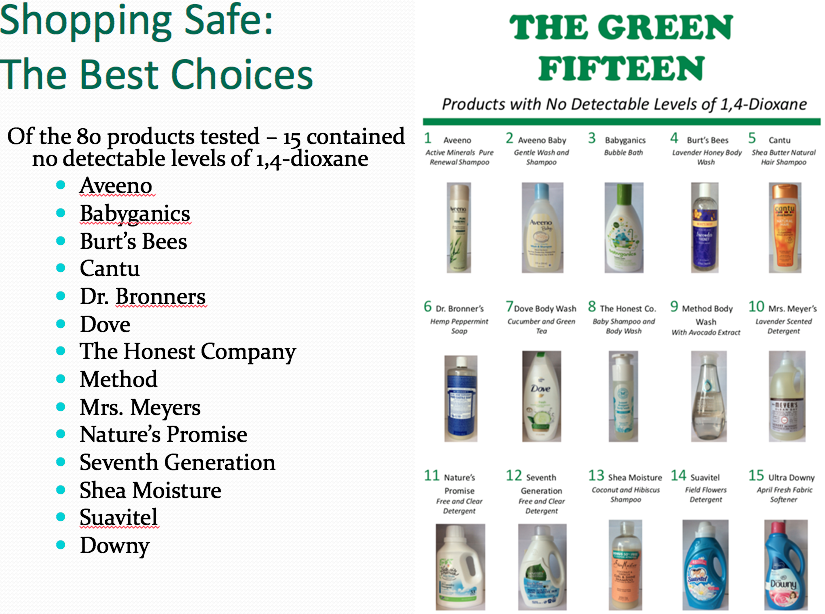1,4-dioxane is a byproduct of manufacturing and therefore it’s not listed on product labels, which makes it difficult to look out for when purchasing products. It is vital to human health and the health of the environment to stay far away from 1,4-dioxane and we can all do so by avoiding the known products that contain it. Listed below are products to look out for that could contain 1,4-dioxane:
- Paints
- Primers
- Varnishes
- Degreasers
- Ink
- Laundry Detergents
- Soaps
- Shampoos
- Baby Products
Toxic and Cancer Causing
Sodium lauryl sulfate (SLS) and sodium laureth sulfate (SLES) when combined during the manufacturing process, creates the byproduct 1,4-dioxane. SLS and SLES are bad chemicals on their own and have been linked to irritation of the skin and eyes, neurotoxicity, reproductive toxicity, organ toxicity, endocrine disruption and ecotoxicology. These are the same chemicals found in many of the products we use on a daily basis.
What the Agencies Have to Say
The International Agency for Research on Cancer classified 1,4-dioxane as a Group 2B carcinogen, which means that it is possibly carcinogenic to humans. All in all that just means that there is not enough data yet to support it. The United States Food and Drug Administration’s (FDA) recommends that these levels be monitored, and encourages manufacturers to remove 1,4-dioxane, but it is not required for them to do so by federal law. Governor Cuomo signed a bill banning products in the State of New York with 1,4-dioxane, starting in 2020 as pictured bellow:

“As emerging contaminants like 1,4-dioxane continue to show up in water systems around the country, in New York we are taking aggressive action to keep our drinking water clean and safe,” Gov. Andrew M. Cuomo, seen May 12, said in a statement Monday. Credit: Charles Eckert
I would not take chances on even possibly carcinogenic, especially when it comes to washing newborn babies with baby detergent that is labeled safe and gentle and free of chemicals, when really it is full of 1,4-dioxane. These are the products we are bathing in everyday, washing our clothes with, cleaning with, and drinking! 1,4-dioxane is ending up in our water, which is extremely difficult to reverse the damaging effects of. Pictured below is a list of products with the highest levels of 1,4-dioxane:

Common products found to have dangerously high levels of 1,4-dioxane – Credit: CCE
What YOU Can Do
Knowing what to look out for and what products are safe is crucial. With so many products on the shelves, it can be very difficult to pick the right one. The graphic below is a great visual and long list of what we know is safe on the shelves. Don’t forget, the products we use on a daily basis get flushed down the drain and go back into our water. With Long Island exceeding the national average and testing showing highest levels in the state of New York, we need to do what we can to keep chemicals out of our water source because it’s the only one we have. So, it is not just what we use that is important to our health, but it is important to the health of the environment. Eliminating the products that are known to contain 1,4-dioxane will put you a step in the right direction of better health, but the environments too.

Products found to have no detectable levels of 1,4-dioxane – Credit: CCE
More information on the above can be found by clicking on the links below:
Websites to use:
- https://www.forceofnatureclean.com/non-toxic-laundry-detergent-guide/
- https://attitudeliving.com/products/little-ones-laundry-detergent-fragrance-free-35-loads
- https://www.cleanhappens.com/products/spin-credible-laundry-detergent?variant=31171619848239#shopify-product-reviews
- https://www.madesafe.org/science/hazard-list/14-dioxane/
- https://www.newsday.com/long-island/environment/1-4-dioxane-household-products-1.28968339
By: Claire J Moran, Long Island Pine Barrens Society


